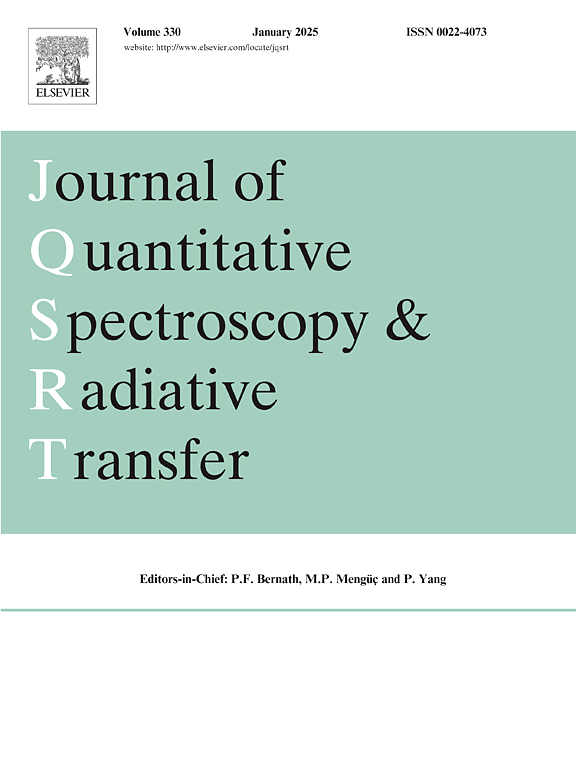A fully ro-vibrationally resolved corona model for the molecular hydrogen Fulcher-α system
IF 2.3
3区 物理与天体物理
Q2 OPTICS
Journal of Quantitative Spectroscopy & Radiative Transfer
Pub Date : 2025-03-10
DOI:10.1016/j.jqsrt.2025.109414
引用次数: 0
Abstract
A ro-vibrationally resolved corona model for the molecular hydrogen Fulcher- transition based on the Yacora solver is introduced. The model couples 1365 ro-vibrational levels of the , and states via electron impact excitation from the ground state into the state and subsequent spontaneous emission into the state. For the process of electron impact excitation a set of 45260 fully ro-vibrationally resolved cross sections calculated with the molecular convergent close-coupling (MCCC) method in the adiabatic-nuclei formulation is applied. The MCCC cross sections are compared with results of a scaling method used in other works, demonstrating the need for dedicated ro-vibrationally resolved cross sections. By post-processing the model output, entire Fulcher spectra can be simulated. These spectra are benchmarked with measurements from an inductively coupled plasma discharge at a pressure between 1.1–10Pa and a RF power of 700W. The model results agree very well with the experiment both in relative shape and in absolute value. A non-ro-vibrationally resolved, purely electronically resolved collisional radiative model for molecular hydrogen (including further states and reaction channels) is applied to investigate the validity of the corona approximation for the benchmark plasmas and the relevance of possible process extensions of the corona model. Furthermore, the influence of collisional quenching, autoionization and predissociation is discussed.
求助全文
约1分钟内获得全文
求助全文
来源期刊
CiteScore
5.30
自引率
21.70%
发文量
273
审稿时长
58 days
期刊介绍:
Papers with the following subject areas are suitable for publication in the Journal of Quantitative Spectroscopy and Radiative Transfer:
- Theoretical and experimental aspects of the spectra of atoms, molecules, ions, and plasmas.
- Spectral lineshape studies including models and computational algorithms.
- Atmospheric spectroscopy.
- Theoretical and experimental aspects of light scattering.
- Application of light scattering in particle characterization and remote sensing.
- Application of light scattering in biological sciences and medicine.
- Radiative transfer in absorbing, emitting, and scattering media.
- Radiative transfer in stochastic media.

 求助内容:
求助内容: 应助结果提醒方式:
应助结果提醒方式:


